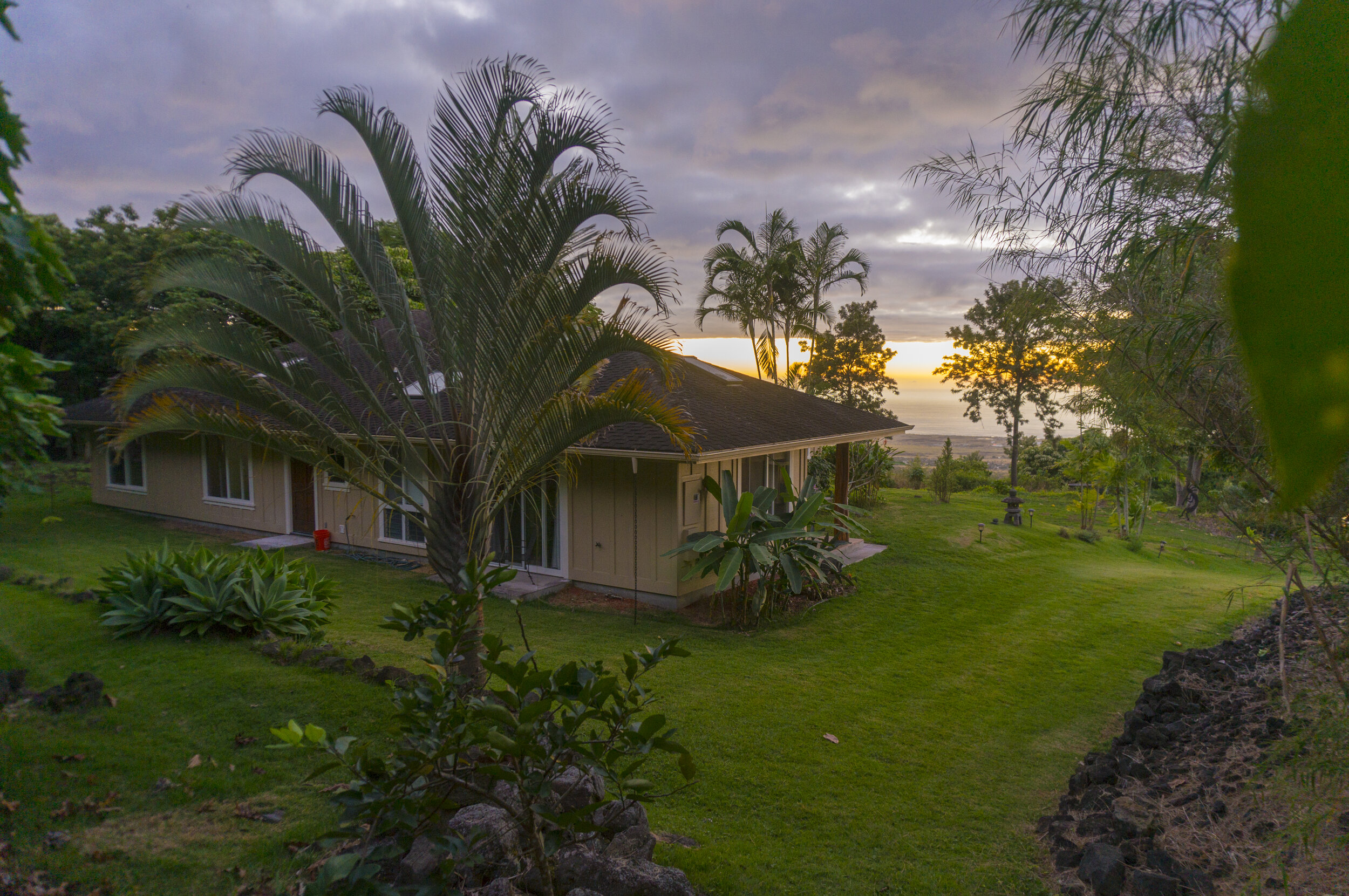“If you don’t like the weather, wait a minute.” Mark Twain famously said that quote regarding New England. If he had been in Hawaii, he might have said something like, “If you don’t like the weather, take a few steps to your left.”
The weather on the Big Island changes about as much as the landscape. In one area, it can rain every single day. Just a few miles down the road, it might not rain but a few inches all year! When you’re looking for property around the Big Island, researching the typical climate and weather patterns is just as important as picking out the most scenic view.
Kohala Coast
The Kohala Coast is located on the western coast of the island. If you’re looking for true Hawaiian weather, this is where you want to be. Annual rainfall totals average only 0-10 inches, which means you’ll hardly ever see a rainy day in paradise. If it does rain, chances are it’ll only last for a few minutes. Grab a drink and by the time it’s empty, the rain will be gone, and you can head back to the beach.
When you move to the Kohala Coast, you can throw away your winter jackets. Like most areas around the island, temperatures consistently land in the mid-to-upper 70s all year long.
The homes in this area reflect the perfect weather. This is where you’ll find most of the luxury homes and high-end resorts.
Waikaloa
Waikaloa is just south of the Kohala Coast and receives very similar weather. It might catch a few more inches of rain per year, but that won’t stop you from staying nice and tan year-round. Average rainfall lands somewhere between 10-20 inches annually, still well below the mainland average of 32.21 inches. Temperatures will be very similar to the Kohala Coast.
Luxury homes and homesites aren’t hard to find in this region. It’s even earned itself a nickname for all the high-end amenities scattered about: The Kona Resort Coast.
Kailua-Kona
Kailua-Kona is one of the two “major” cities on the Big Island. It can be found to the south of Waikaloa on the west coast of the island. Kailua-Kona gets somewhere between 20 and 40 inches of rain annually. Rainfall can increase slightly as you move southward or inward towards the center of the island. Most days are still warm and sunny.
While it might get a few more rainy days per year compared to the Kohala Coast, you’ll start to notice a bit more green scattered around compared to the dry northern landscape.
Homes in this area are highly sought after because of their close proximity to the city. You’ll certainly never run out of things to do.
Hawi
Hawi (pronounced Ha-vee) is located on the northern coast of the island, just above the Kohala Coast. While the Kohala Coast might be one of the driest places on the island, Hawi sits almost on a semi-peninsula. Without any protection from the mountain, rain can come in from the east without any interference. Rainfall totals in Hawi can reach between 60-80 inches per year.
But just because it’s a little wetter, doesn’t mean it’s any less beautiful. The northern regions of the island are filled with lush forests. If you want to be a part of a small, tightknit community and keep a garden in your backyard, this might be the place for you. Plus, if it’s sun you want, a 25-minute car ride will get you to the sunny Kohala Coast.
Volcano
The eastern regions of the island tend to be much wetter than the west coast. Volcano is located on the southeastern region of the island and receives between 60-120 inches of rain annually. All that rain makes for plenty of lush, dense forests.
Volcano is also a bit colder than the west coast with average temperatures hovering in the mid-to-upper 60s.
Hamakua Coast
The Hamakua Coast is located on the northeast coast of the island on the eastern base of Mauna Kea. While the regions just to the other side of the mountain have borderline desert conditions, the Hamakua Coast can receive anywhere from 80 to 160 inches of rain per year. While you might have some trouble finding large trees on the west coast, Hamakua is filled with plants and greenery.
The wind coming from the east pushes the waves right into the side of the island. If you want to see some spectacular wave-crashing action, check out Laupahoehoe Point.
Hilo
Rain tends to come in from the east. The west coast has the mountains to protect it and stop rain before it gets there. The east coast is a different story. The rain comes in and gets hung up on the mountains, which means it just rains and rains and rains.
Hilo is located on the east coast of the Big Island and is officially deemed the wettest city in the United States. Annual rainfall totals can range from 120-160 inches! With that much rain, much of the region is classified as rainforest. People enjoy coming to Hilo to hike through the tropical rainforests and see the incredible waterfalls that fill the region.
Take a Side
Hawaii is a unique place. It has deserts, rainforests and everything in between. No matter what your taste in climate is, there’s a place for you on the Big Island. If you’re ready to start looking for your dream home, I’m ready to help you find it. I have lived on the island for years and can tell you all about the different regions that make Hawaii special. You can reach me by phone (808.209.6244) or by email (RandyRipley808@gmail.com) to take the first step towards living your dream life in Hawaii.
Aloha, and welcome to Hawaii.

